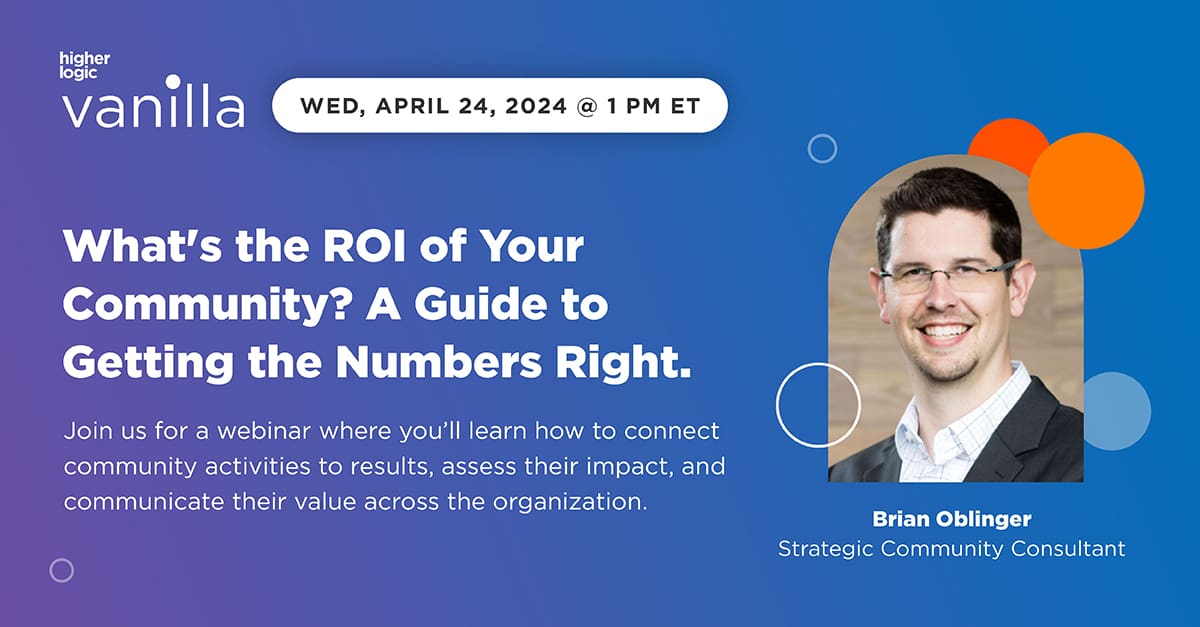Why a Customer Community Should be Central to Your Customer Experience
A customer community creates a customer hub where customers can connect with you, connect with each other, and find what they need for success.
If you’re trying to improve the customer experience, start by looking at whether your digital customer experience is disjointed.
As a SaaS provider or B2B company, “digital” might be the only way a customer interacts with you. If all they experience is disconnected, frustrating processes where they have to login multiple times and go to multiple systems in order to get their problem answered, you’re not delivering an optimal experience.
One approach to fixing the problem is to centralize the customer experience around a customer community.
A customer community creates a space where customers can connect with you, connect with each other, and find what they need for success.
Your customer community should be a digital hub; a place where customers can access everything they need regarding your company or product during every stage of the customer lifecycle.
Here are three ways you can use a community to improve the digital customer experience.
1. Connect Customers with Each Other
People don’t connect with businesses, they connect with other people. An online community enables customers build connections that help them be successful. Here are a few examples of reasons customers might visit your community:
- When a customer wants answers about best practices for their specific use case
- If your customer wants to submit a product improvement idea
- When your customer wants to talk to someone who’s used one of your product or services they don’t have yet
You get the idea.
You might be wondering: Why can’t the digital hub just be my main website? Generally, websites are your prospect-facing, lead-capture tool, not designed with existing customers or the customer journey in mind. Even if you have designed your website with existing customers in mind, customers still can’t use it to connect with other customers.
Related: 3 Ways This Customer Community is Humanizing the Customer Experience
2. Build a One-Stop Shop Through Tech Stack Alignment
To be a digital hub for the customer experience, you should build your customer-facing tech stack around your community.
Why? In order to make your community that one-stop shop where customers can come to find support and success, engage with you and other customers, provide feedback and download resources, your community must play well with other key tools.
The most essential integration? Community and your CRM. Your Customer Relationship Management (CRM) software is the central hub of data. It’s not customer-facing, but it helps you keep your customer data organized on the backend. The community and CRM work together to support both the customer-facing and the company-facing experiences.
Beyond that, you’ll want your community to complement other key software you use to support the customer journey. For example, maybe you’ll prioritize support ticketing software, product development software, or a learning management system.
Build the plan that works best for your company’s community use case and the problems you’re trying to solve.
3. Be a Resource Across All Stages of the Customer Journey
The last reason community is such a helpful tool for improving the digital customer experience: It’s fundamental to every stage of the customer journey. We’ll explain:
- Stage 1: Prospect | Discovery: The streamlined digital experience starts before your customers become customers – the prospect stage. With an open or partially open community, prospects can find your community in search results. They find an answer to a problem they’re facing when they discover your community thread in search. They could even create a login and start participating.
- Stage 2: New Customer | Implementation/Onboarding: Once they’re customers, the community becomes the place where your customer goes for all their questions. It’s a resource they can use to meet other customers, ask for best practices, and look for product education. They can visit your knowledge base, look up product documentation, and ask questions of other customers, all of which encourage full product adoption and help ensure a happier customer who is getting the most value possible out of their purchase.
- Stage 3: Existing Customer | Steady State: Your customer continues to rely on your community at this stage. As they grow with your company, they may start contributing their own advice and recommendations. Even if they don’t, it’s an invaluable resource for self-service and product adoption.
- Stage 4: Growing Customer | Advocate: As customers grow and become advocates, your customer community is where they can go to leave product feedback and help other customers (and prospects) grow with your company, too. It’s their hub to submit support tickets, suggest product improvements, give advice to other customers, and share their own thought leadership and best practices.
Improve the Digital Customer Experience with a Customer Community
Creating a community as a hub will help you streamline a disjointed digital customer experience. Do you want to know more about what a customer community could look like for your business? Check out our guide.




